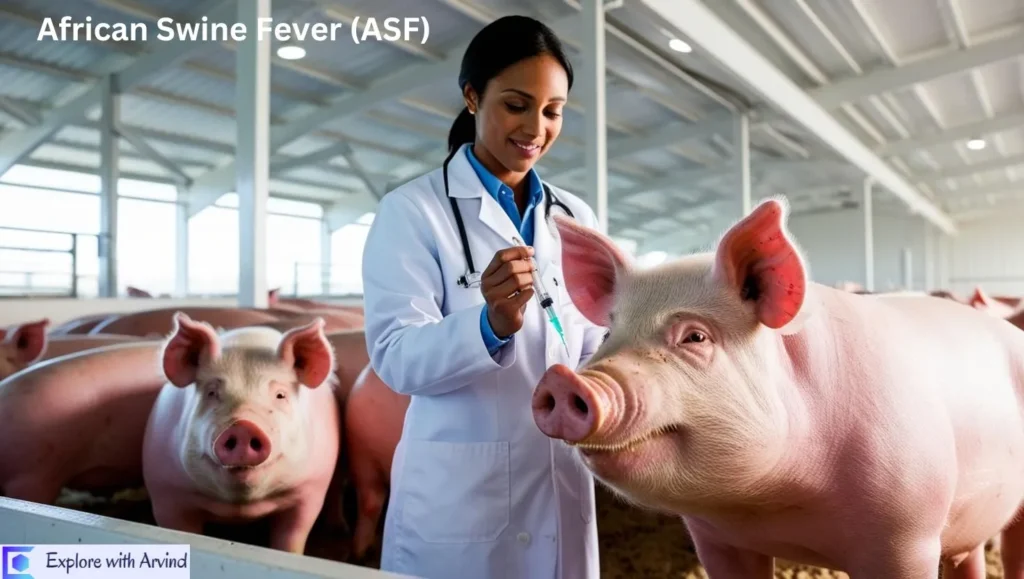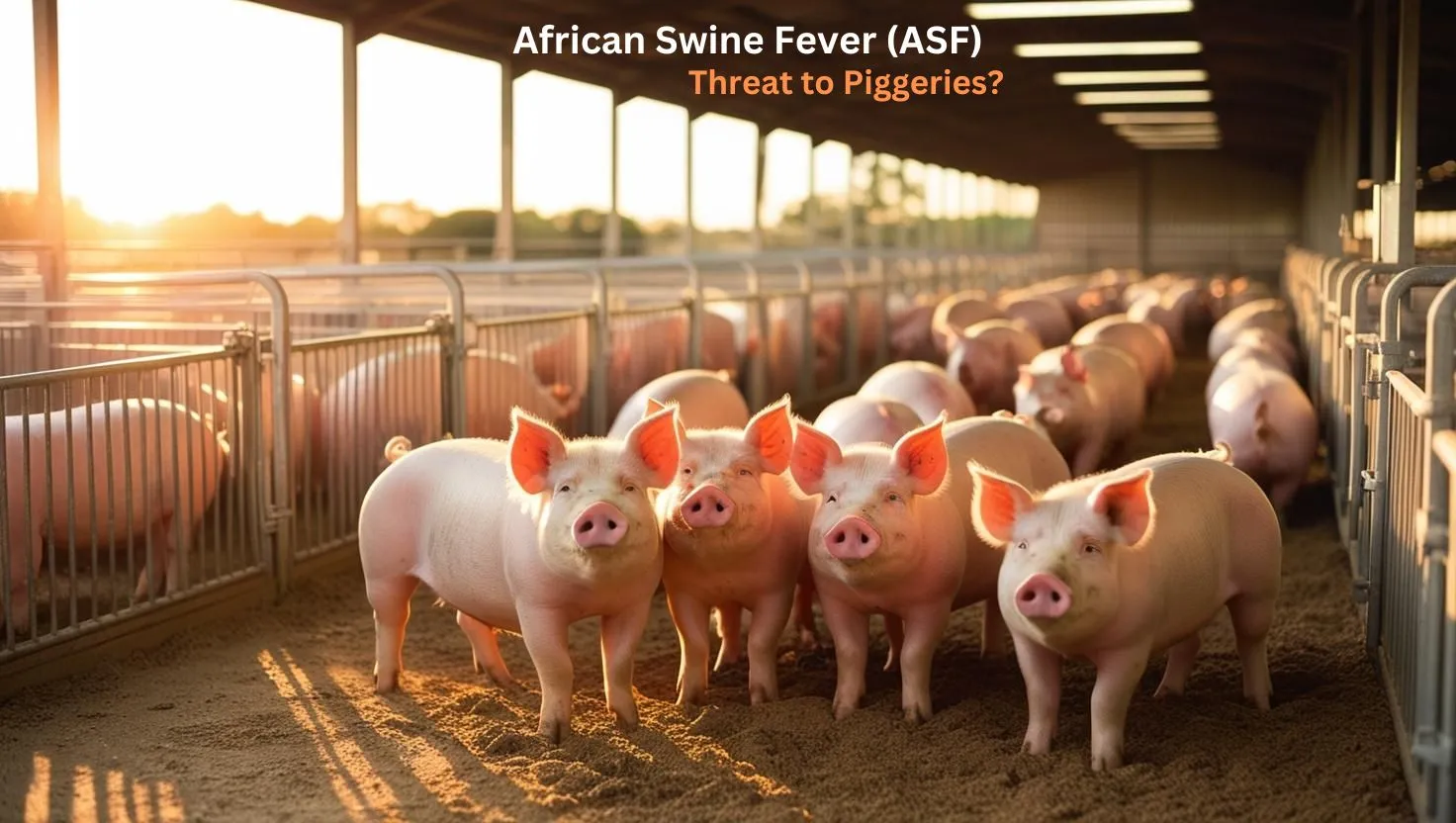Table of Contents
ToggleAfrican Swine Fever: The Global Threat to Pig Farming and Pork Industry
African Swine Fever (ASF) is a highly contagious and deadly viral disease that affects domestic pigs and wild boars. Although it poses no risk to human health, ASF has a significant impact on animal health and the global pork industry due to its high mortality rate and economic implications. Below is a detailed guide to understanding ASF, its causes, symptoms, transmission, and control measures.
What Causes African Swine Fever?
African Swine Fever is caused by the African Swine Fever Virus (ASFV), a double-stranded DNA virus of the genus Asfivirus. It is a hardy virus that can survive for long periods in various environments, including meat products, carcasses, and animal feed, making eradication challenging.
Symptoms of ASF
The clinical signs of ASF vary depending on the virulence of the virus and the stage of infection. Common symptoms include:
High fever (up to 42°C or 108°F)
- Loss of appetite and lethargy
- Red or blue discoloration of the ears, snout, and limbs
- Vomiting and diarrhea (sometimes with blood)
- Respiratory distress
- Abortion in pregnant sows
- Sudden death, often within 6–13 days of infection
How is ASF Transmitted?
ASF can spread through several direct and indirect methods:
-
Direct Contact: Transmission occurs when healthy pigs come into contact with infected pigs, their secretions, or blood.
-
Contaminated Feed or Water: Feed, water, and bedding contaminated with the virus can spread the disease.
-
Fomites: Vehicles, equipment, clothing, and footwear can act as carriers.
-
Wild Boars: ASF is prevalent in wild boar populations, which act as reservoirs.
-
Soft Ticks: Certain tick species (Ornithodoros) can transmit the virus biologically.
Impact of ASF
ASF has a devastating impact on pig populations and the economy:
-
High Mortality Rate: Mortality can reach 100% in severe outbreaks.
-
Economic Losses: Affected farms and industries face losses due to culling, trade restrictions, and decreased pork production.
-
Global Pork Industry: ASF outbreaks disrupt the supply chain and increase pork prices globally.

Data Regarding African Swine Fever (ASF)
Mortality Rate: ASF has a mortality rate of up to 100% in its most severe form.
Economic Losses: ASF outbreaks caused economic losses estimated at billions of dollars annually, disrupting the global pork industry. For example: In China, ASF outbreaks in 2018–2019 wiped out over 40% of the country’s pig population, significantly impacting global pork prices.
Countries Affected: ASF has been reported in more than 50 countries, spanning Africa, Europe, Asia, and the Americas.
Spread Statistics:
In Europe, wild boars have been a major reservoir for ASF, with continued cases in countries like Poland, Germany, and Belgium.
In Asia, countries such as Vietnam, the Philippines, and Indonesia have faced large-scale outbreaks, leading to the culling of millions of pig.
Virus Survival: ASFV can survive for:
Up to 3 months in fresh pork.
Several years in frozen meat.
Several days in contaminated fomites such as clothes and vehicles.
Economic Impact: The pork industry in Southeast Asia alone faced losses exceeding $50 billion due to ASF-related culling and trade bans.
Diagnosis and Control
Diagnosis
Laboratory tests are essential for confirming ASF, as its symptoms can resemble other diseases such as Classical Swine Fever. Diagnostic methods include:
-
Polymerase Chain Reaction (PCR)
-
Virus isolation
-
Serological tests
Control and Prevention
ASF has no vaccine or cure, making prevention the primary method of control:
-
Biosecurity Measures:
-
Restrict farm access to authorized personnel only.
-
Disinfect vehicles, equipment, and clothing.
-
Use separate facilities for wild boar and domestic pigs.
-
-
Monitoring and Surveillance: Regular testing and reporting of any unusual pig mortality.
-
Culling: Infected and at-risk pigs must be culled to prevent the spread of the virus.
-
Safe Disposal: Proper disposal of carcasses and contaminated materials.
-
Prohibition of Swill Feeding: Ban the use of food waste or leftovers that may contain infected meat.
Global Status of ASF
ASF outbreaks have been reported in Africa, Europe, Asia, and the Americas, affecting both large-scale farms and smallholders. Governments and international organizations, including the Food and Agriculture Organization (FAO) and the World Organisation for Animal Health (WOAH), are working on coordinated responses to combat ASF.
Conclusion
ASF is a critical global concern with devastating effects on pig populations and economies. While there is no cure or vaccine, strict biosecurity measures, early detection, and effective containment strategies can mitigate the impact of the disease. International cooperation and research are essential to prevent the spread of ASF and protect the global pork industry.
